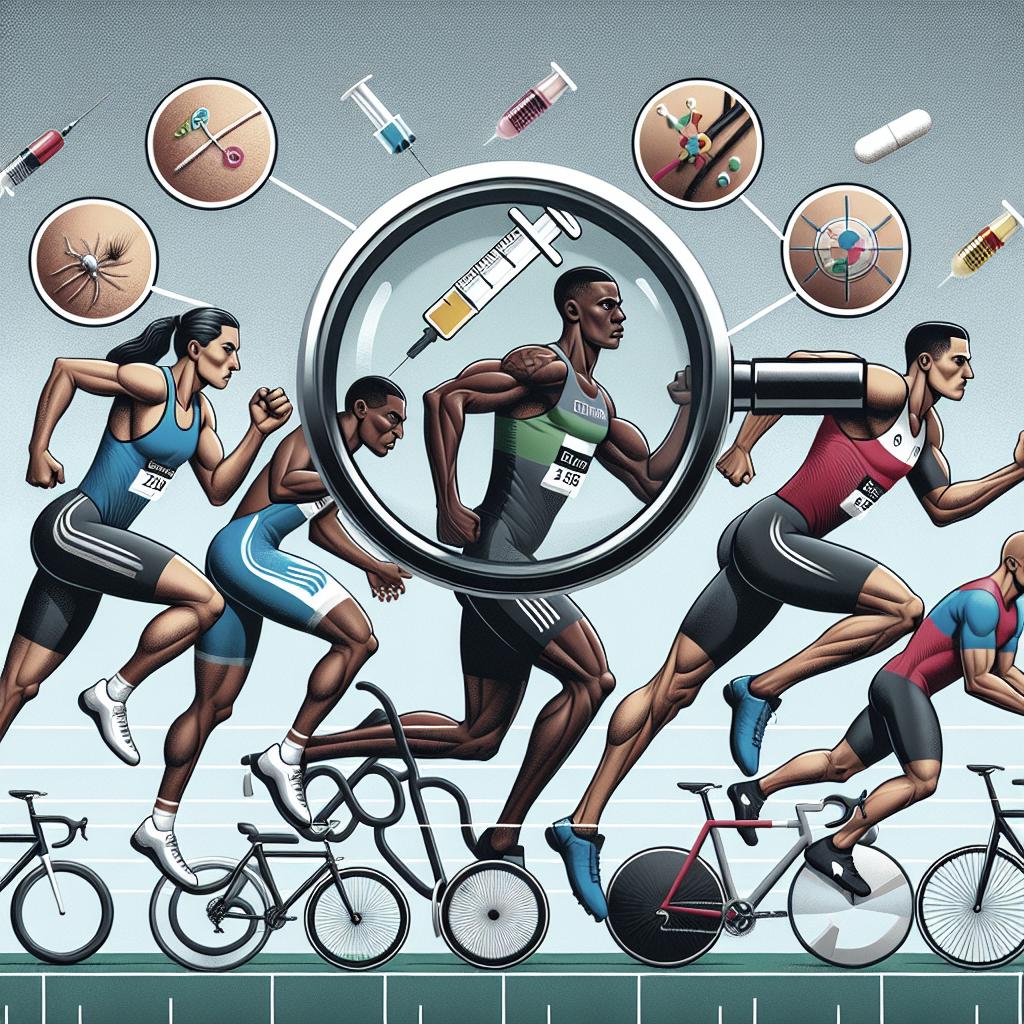<>
The world of collegiate athletics is highly competitive, and in this pressure-cooker environment, the temptation to use performance-enhancing drugs can prove irresistible to some student-athletes. Violating anti-doping rules, however, comes with severe consequences that can derail not just an athlete’s career, but also their overall life trajectory. In this blog post, we delve deep into the penalties associated with anti-doping violations, the substances banned under NCAA rules, the specific protocols for drug testing, the process of handling positive test results, the implications of protocol breaches, and whether there is a viable appeal process for those accused of these violations. Lastly, we’ll discuss if seeking legal counsel is a prudent step for implicated individuals.
Consequences of Doping
The repercussions of doping extend far beyond disqualifications and suspensions. The ramifications can include damage to an athlete’s reputation and credibility, which can significantly hinder any future professional endeavors within or outside of sports. Moreover, repeated violations may result in more severe sanctions, such as permanent bans from competition, affecting not only the athlete but also their team and institution. From an institutional perspective, universities faced with doping scandals may incur financial penalties, lose sponsorships, and suffer damage to their reputation. In cases where entire teams are implicated, tournament results may be annulled, and scholarships might be revoked, impacting the broader athletic community.
Substances That Are Banned Under NCAA Anti-Doping Rules
The NCAA maintains a comprehensive list of prohibited substances, which includes anabolic steroids, stimulants, diuretics, and various other performance-enhancing drugs. Additionally, street drugs such as cocaine and marijuana also fall under the banned substance list, even if they do not directly enhance athletic performance. Substances are classified into categories based on their effects on performance and health risks. Athletes are expected to be vigilant about their intake, ensuring that any medications or supplements they consume are free from prohibited substances. It’s crucial for student-athletes to consult with medical professionals who understand NCAA guidelines to avoid inadvertent violations.
Drug Testing Rules for Student-Athletes
Random drug testing is an integral part of ensuring a level playing field in collegiate sports. Student-athletes may be selected for testing without prior notice, typically before, during, or after a competition. There are also routine tests that occur throughout the training season to detect any misuse of banned substances. The testing process is designed to be as rigorous and transparent as possible to avoid any biases or inconsistencies. Athletes are generally required to provide urine samples, although other methods such as blood testing may also be employed. Each step in the drug testing process is strictly regulated to ensure validity and fairness.
How Samples Are Collected
The collection of samples is an elaborate protocol aimed at preserving the integrity of the testing process. Upon selection, the athlete is accompanied by a certified collection agent to a private area where the sample is provided. This ensures that the sample remains uncontaminated and that the process is recorded accurately. Once the sample is collected, it is securely sealed and labeled in the presence of both the athlete and the collection agent. The chain of custody is imperative, and every person handling the sample must verify its integrity, minimizing the risk of tampering or corruption. Any deviation from this protocol can lead to invalid or disputed results.
What Happens After a Positive Test?
A positive test initiates a multi-step response protocol. Initially, the athlete is notified, and a provisional suspension is often imposed. The athlete then has the right to request a ‘B’ sample analysis to confirm the initial positive result. This secondary test aims to rule out any errors or false positives. After confirmation, the case is reviewed by the NCAA, which determines the appropriate penalty based on the circumstances and the type of substance detected. Penalties can range from short-term suspensions to permanent bans, depending on the severity and nature of the violation. Additionally, counseling and rehabilitation programs may be recommended for the athlete.
Breach of Protocol Violations
Breaches in protocol can occur at various stages of the anti-doping process, from sample collection to result management. These violations can undermine the fairness and reliability of the testing system. Common breaches include improper handling of samples, delays in processing, and mistakes in documentation. If a protocol breach is detected, it could render the test results invalid. This does not mean the athlete is off the hook; instead, it often leads to a re-evaluation of the entire testing process and may result in additional scrutiny to ensure protocol adherence in future testing. Penalties for protocol breaches can extend to testing officials and institutions, emphasizing the seriousness of maintaining procedural integrity.
Is There an Appeal Process for NCAA Anti-Doping Violations?
The NCAA does provide an appeal process for athletes who believe they have been unfairly penalized. The appeals process offers a structured platform for the athlete to present their case, whether it’s to dispute test results or to challenge the severity of the sanction imposed. The athlete must submit a formal appeal within a specific timeframe, usually outlined in the NCAA’s regulations. The appeal is reviewed by a dedicated committee that considers all evidence presented, including medical records, the sample collection protocol, and any other relevant documentation. Once the appeal is heard, the committee can either uphold the original penalty, reduce it, or exonerate the athlete entirely, depending on the findings.
Do You Need to Speak With an NCAA Anti-Doping Lawyer?
Given the complexity and potential consequences of anti-doping violations, consulting an NCAA anti-doping lawyer can be a prudent step. Legal advisors specializing in sports law can guide athletes through the intricate regulations, help prepare a robust defense, and ensure that all procedural rights are met during the appeal process. A legal expert can also assist in navigating the broader implications of a doping violation, such as scholarship issues, media scrutiny, and future career prospects. Engaging with a knowledgeable lawyer can alleviate some of the stress and uncertainty, allowing the athlete to focus on rehabilitation and recovery.
Lessons Learned
| Aspect | Summary |
|---|---|
| Consequences of Doping | Severe penalties including disqualification, reputational damage, and long-term career impacts. |
| Banned Substances | Includes anabolic steroids, stimulants, diuretics, and street drugs like cocaine and marijuana. |
| Drug Testing Rules | Includes random and routine testing, usually urine-based but sometimes blood-based. |
| Sample Collection | Strict protocol involving certified agents, secure sealing, and chain of custody to prevent contamination or tampering. |
| Post-Positive Test Procedure | Notification, provisional suspension, ‘B’ sample analysis, and final review to determine penalties. |
| Breach of Protocol | Errors in sample handling or processing can invalidate results and lead to additional scrutiny. |
| Appeal Process | A structured committee review for athletes contesting their penalties. |
| Legal Counsel | Engaging an NCAA anti-doping lawyer can help navigate the complex regulations and defense strategy. |
In understanding the full scope of NCAA anti-doping rules and their implications, it’s clear that compliance is crucial for maintaining the integrity and fairness of collegiate sports. Whether you’re a student-athlete, coach, or affiliated with any institution, staying informed about these regulations can help foster a transparent and competitive athletic environment.


